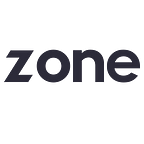Following the inaugural Springboard, Zone’s design critique workshop for new designers, UX designer Jess Carver gives advice on creating a brilliant portfolio…
The time has come. You’re dusting off your portfolio to apply for that exciting job. Or perhaps you’re creating your portfolio from scratch to search for your first design job. Either way, it’s a difficult task: shortlisting projects, making tough calls about what makes the cut.
I spent weeks creating my portfolio to apply for my first design job, agonising over what to include, fretting about what impression I was making and whether if it really communicated my fledgling style.
Looking back, I shouldn’t have worried. Great employers are interested in you, your work, and how you got to where you are. I’ve been chatting to my fellow designers at Zone and here are four things we think make up a really professional design portfolio.
1. Choose quality over quantity
Pick a few really considered items that show the breadth of your style and skills. Personally, I choose the top five projects I’m most passionate about and which best reflect me and my design skills.
Also, only put in items that you feel really confident talking about in detail. It’s important that you can talk about all the research and process you went through to get to this point. If you can’t recall all the details, perhaps this is one for your back pocket.
2. Tell your story
Consider what story you want to tell as you run through your portfolio. Each project is an opportunity to tell a story about who you are as a designer, for instance:
- Piece 1 — could be your ideation
- Piece 2 — could be your sketching approach
- Piece 3 — could be branding and attention to detail
- Piece 4 — could be a link to a UI prototype
Bobbie Hardwick, our experience director at Zone, recommends that, as a starting point, you focus on the job you are applying for and the type of work you want to do:
“My work should tell the story of my thinking, my process and my strengths as well as where I want to grow — not just show finished crafted pieces. Each piece is an opportunity to give a different angle, ie the beginning of the design journey, knowledge gathering, sketches, thoughts. The others could be around my delivery process, options, iterative thinking, designs. Each should be slightly different.”
Tailor your portfolio’s story to the job you want to get. For example, if it’s at a small tech startup, you are likely to be wearing many discipline hats, so it’s great to show a variety of strengths and skills.
Not everything has to be finished, polished work. Personally, I love seeing work in progress in a portfolio — it’s a real window into you as a designer.
It’s also worth remembering who you are going to be presenting to and what they might be expecting to see. As a UX designer, I’d be looking for evidence of design thinking and translating user research into UI. However, a scrum master or delivery professional would look for a completely different set of skills.
For example, Zara Powell, Zone’s delivery director, often joins UX designers at first interview to understand how the candidate would fit into an agile team dynamic:
“It’s interesting to see how [the portfolios] are all different, but I enjoy being able to understand what this person is about.”
3. Show us why
We see plenty of designers who have beautiful portfolios. However, not many actually say why they did what they did. It’s important to communicate your process, as this is what Zone and most other companies are hiring you for. Your thinking is more valuable than your production skills.
Hoon Kim, our head of design, says we look for the ability to be faced with a sticky design challenge, work through it, come out unscathed and with a great solution:
“It’s not just a portfolio of design skillset, but their way of thinking.”
Clients, colleagues, team-mates and design peers will always want to know why you’ve made your design decisions and you need to be able to articulate them. It’s a crucial skill that many designers take years to be able to hone, so be open about the why.
4. Be transparent
Constraints are a professional designer’s reality. They take many forms: a restrictive brand style, little time to work on the problem, high-pressure environments and so on.
Hoon says that designs which aim to solve real-world problems are really interesting to see, because they better reflect the everyday challenges that savvy businesses face.
Jacob Pretorius, senior .NET developer at Zone, thinks it’s crucial to show an example of working within existing constraints:
“Even if as a student they haven’t done much/any such work, take something like Facebook and build out a redesign for some of it while trying to keep with the Facebook feel.”
Here at Zone we don’t think that the format of your portfolio is particularly important. What matters is that it helps you communicate your story as a professional designer succinctly, thoroughly and transparently. Good luck!
Follow @ThisisZone for news of the next Springboard event
